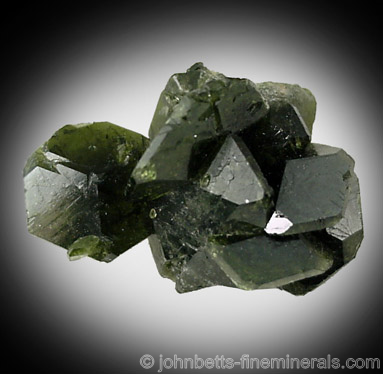The Mineral uvite

Uvite is an uncommon form of Tourmaline, and it forms different
crystal formations than the most of the other Tourmalines. Though it
lacks the color diversity as some of the other Tourmaline forms, it does
occur in beautiful green and reddish-brown crystals, as well as
lustrous submetallic crystals. The name Uvite is derived from the
type locality of the Uva Province, in Sri Lanka, where it was first
identified.
Uvite is very similar to Dravite Tourmaline, and they sometimes for together in a single crystal. It can sometimes be very
difficult to make an exact distinction between Dravite, Uvite, and the newly designated Fluor-uvite.
Chemical Formula
Ca(Mg,Fe2+)3Al5Mg(BO3)3Si6O18(OH)4
Color
Light to dark green, light to dark brown, reddish brown, red, purple, brownish-yellow, white, gray, black. May also be multicolored with light and dark brown streakings.
Varieties
-
Form of Uvite where part of the hydroxyl is replaced with
fluorine. Fluor-uvite was recognized as a distinct mineral
species by the IMA in 2010, with the following chemical formula:
Ca(Mg,Fe2+)3Al5Mg(BO3)3Si6O18OH)3F
Uses
Uvite, being an uncommon form of Tourmaline, is mainly a collectors minerals.
Noteworthy Localities
Uvite is not a common mineral. The best locality for this mineral is Serra das Éguas, Brumado, Bahia, Brazil, where it occurs in lustrous gemmy red and green crystals. One of the most famous occurrence in the U.S. is the Bower Powers Farm, Pierrepont, St. Lawrence Co., New York, where lustrous black crystals can be found. Recent analysis of these Pierrepont Tourmalines have determined them as having Fluor-uvite cores and Dravite rims. However, most collectors still refer to them as Uvite from their original designation, and are in no rush to change their mineral labels.
Brownish-red translucent Fluor-uvite comes from the Bush Farm (also known as the Reese Farm), near Richville, St Lawrence Co., New York. Good crystals have come from the marbles at Franklin and Hamburg, Sussex Co., New Jersey; and Amity, Orange Co., New York. In Canada, Uvite comes from the Tait Farm in Dungannon, in the Bancroft District, Ontario, Canada. A new occurrence producing deep emerald-green Uvite has been reported from Mogok, Burma (Myanmar).
Distingushing Similar Minerals
Dravite - May be very difficult to distinguish.
Schorl - Usually occurs in different environments, and crystal habits differ.
Garnet - Forms in different crystals.